
The Ultimate Guide to Growing and Caring for Conifer Trees
If you’re looking for the ultimate guide to growing and caring for conifer trees, then look no further. This comprehensive guide will provide you with all the information you need to successfully cultivate and maintain these beautiful trees. From choosing the perfect location to proper watering and pruning techniques, this guide covers it all. Whether you’re a seasoned gardener or just starting out, this guide will help you ensure the health and vibrancy of your conifer trees. So let’s dive in and make sure your conifer trees thrive for years to come!
Table of Contents
ToggleWhat Are Conifer Trees?
Overview of Conifer Trees
Conifer trees are a diverse group of trees that are known for their needle-like or scale-like leaves and the production of cones. They are typically evergreen, meaning they keep their foliage all year round, and they come in a variety of shapes and sizes. Conifer trees are a great addition to any landscape, providing year-round color and texture. They are also excellent at providing shade, privacy, and windbreaks. With the right care and maintenance, conifer trees can live for many years, adding beauty and value to your property. Whether you want to plant conifer trees for their aesthetic appeal or for their practical benefits, this guide will give you the knowledge and tools to help them thrive. So, if you’re considering adding conifer trees to your landscape, this guide is a must-read to ensure their successful growth and care.
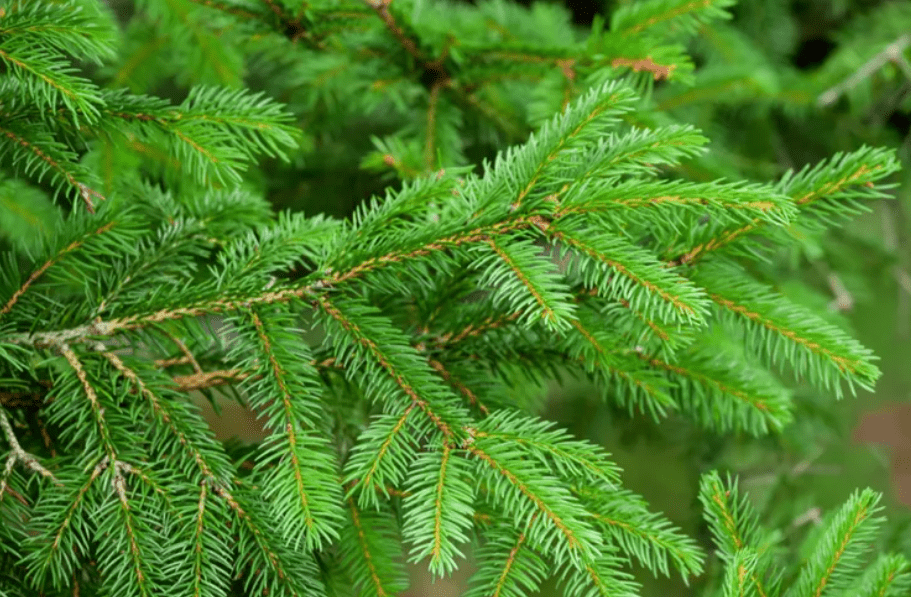
Types of Conifer Trees
There are many different types of conifer trees to choose from, each with its own unique characteristics and benefits. Some popular varieties include pine, spruce, cedar, fir, and juniper trees. Each type of conifer tree has its own distinct shape, size, and color, making it easy to find the perfect fit for your landscape. Whether you’re looking for a tall, majestic pine tree or a compact, bushy juniper, there’s a conifer tree out there for you. Conifer trees also come in a range of colors, from the bright green of a cedar tree to the silvery-blue of a spruce tree, adding visual interest to your landscape. With so many options to choose from, you’re sure to find the perfect conifer tree to enhance the beauty and functionality of your outdoor space. So, if you want to add a touch of natural beauty and functionality to your landscape, consider planting conifer trees today!
Benefits of Conifer Trees
Aesthetic Appeal
Conifer trees offer a range of aesthetic benefits that can enhance the beauty of any outdoor space. With their unique shapes, sizes, and colors, conifer trees add visual interest and texture to your landscape. Whether you prefer the tall, majestic presence of a pine tree or the compact, bushy form of a juniper, there is a conifer tree to suit every taste and style. Additionally, the variety of colors, from the vibrant green of cedar trees to the silvery-blue hues of spruce trees, adds a vibrant and dynamic element to your outdoor space.
Not only do conifer trees provide visual appeal, but they also offer functionality. These trees can be used as windbreaks, privacy screens, and shade providers, making them a versatile and practical addition to any landscape. Plus, their evergreen foliage provides year-round beauty, adding a touch of vibrancy to your outdoor space no matter the season.
Overall, conifer trees are a fantastic choice for anyone looking to enhance the aesthetic appeal of their landscape. With their unique characteristics and benefits, these trees are sure to add natural beauty and charm to any outdoor environment. So, if you want to elevate the beauty of your outdoor space, consider planting conifer trees today!
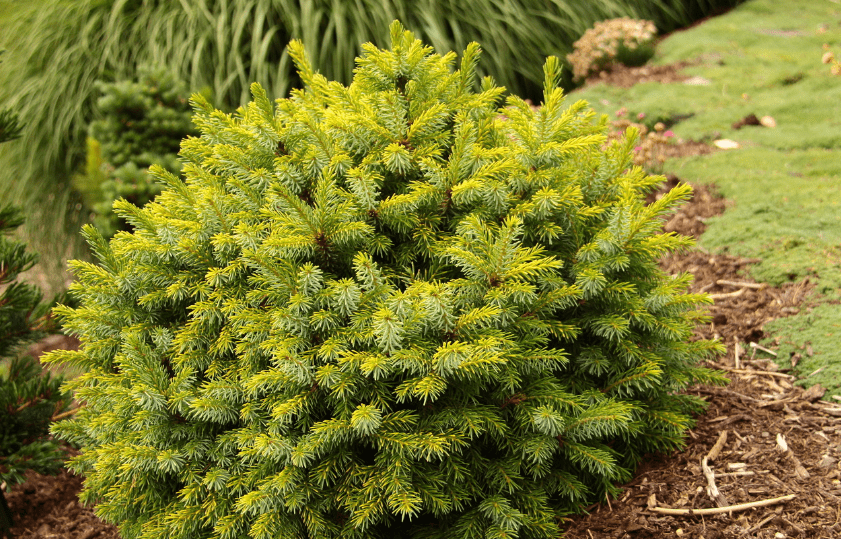
Environmental Benefits
Adding conifer trees to your outdoor space not only enhances the beauty of your landscape, but it also provides environmental benefits. These trees help to improve air quality by removing pollutants and releasing oxygen into the atmosphere. They also play a crucial role in reducing soil erosion and mitigating the effects of climate change by sequestering carbon dioxide. Additionally, conifer trees create habitat for wildlife and contribute to the overall biodiversity of the ecosystem. By planting conifer trees, you are not only beautifying your outdoor space, but you are also making a positive impact on the environment. So, if you care about the planet and want to contribute to its health and vitality, consider planting conifers and reaping the environmental benefits they offer.
Wildlife Habitat
Creating a wildlife habitat in your outdoor space is a great way to support local biodiversity and provide a safe and nurturing environment for a variety of species. By incorporating native plants, water sources, and shelter, you can attract a diverse array of wildlife, including birds, butterflies, and small mammals. Not only does this add natural beauty to your outdoor space, but it also creates a balanced ecosystem that benefits the entire community. By supporting wildlife habitat, you are playing a crucial role in preserving and protecting the environment for future generations. So, if you want to make a positive impact on the world around you, consider creating a wildlife habitat in your outdoor space and watch as it comes to life with the beauty of nature.
Choosing the Right Conifer Trees for Your Garden
Climate Considerations
When it comes to choosing the right conifer trees for your garden, climate considerations play a crucial role. It’s important to select conifers that are suited to the climate of your region in order to ensure their growth and longevity. By planting conifer trees that are well-adapted to the local climate, you are not only contributing to the overall health of your garden but also supporting the environment.
Conifer trees are known for their ability to thrive in different climate conditions, from the cold and snowy regions to the warm and dry areas. By selecting the appropriate conifer species for your climate, you can create a beautiful and sustainable garden that will flourish year-round. Additionally, planting conifers that are well-suited to your climate can help to conserve water and reduce the need for excessive maintenance, making them a practical and eco-friendly choice for your garden.
So, if you want to make a positive impact on the environment while creating a stunning outdoor space, consider the climate considerations when choosing conifer trees for your garden. By doing so, you can enjoy the beauty of these resilient trees while supporting the health and vitality of the environment.
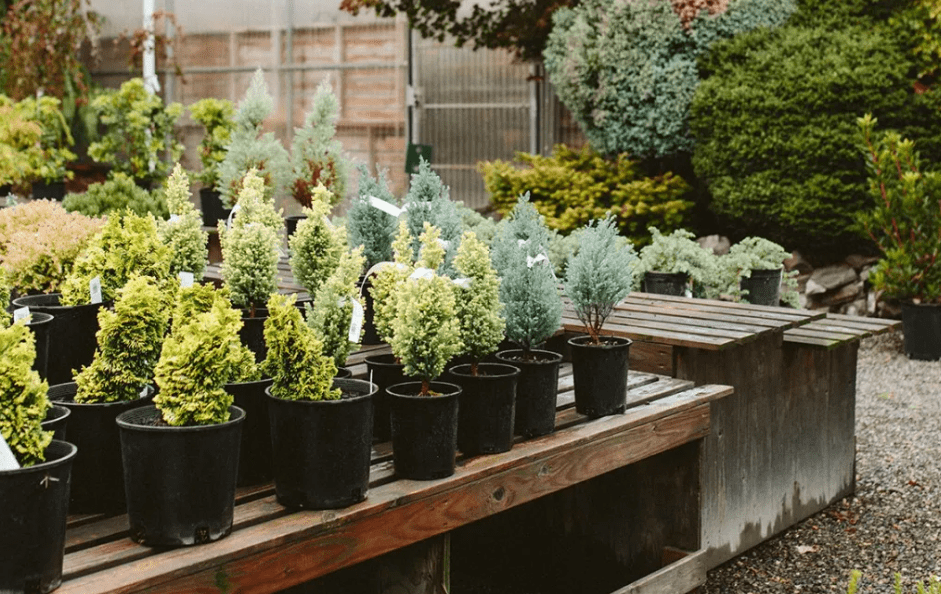
Soil and Site Selection
Are crucial factors to consider when selecting conifer trees for your garden. It’s important to choose a location with well-drained soil and ample sunlight to ensure the healthy growth of conifers. The soil should be rich in organic matter and have a slightly acidic pH level, as this is ideal for conifer trees. Additionally, consider the size and space requirements of the conifers you choose, as some species may grow to be quite large and require ample space to thrive. By carefully considering the soil and site selection for your conifers, you can create an optimal growing environment that will ensure the long-term success and beauty of your garden. So, take the time to carefully assess the soil and site conditions in your garden to ensure that you select the right conifers for your space. Your efforts will be rewarded with a beautiful and thriving garden that will bring you joy and satisfaction for years to come.
Planting Conifer Trees
When and Where to Plant
When and where to plant conifer trees is an important decision that will determine the success and beauty of your garden. The best time to plant conifers is in the spring or fall, when the weather is mild and the trees have a chance to establish their roots before the extreme conditions of summer or winter. As for the location, it’s crucial to choose a spot with well-drained soil and ample sunlight. Conifer trees thrive in soil that is rich in organic matter and has a slightly acidic pH level. Additionally, consider the space requirements of the conifers you choose, as some species may grow to be quite large and require ample space to thrive. By carefully selecting the right time and place to plant your conifer trees, you can create an optimal growing environment that will ensure the long-term success and beauty of your garden. So, take the time to carefully assess the soil and site conditions in your garden to ensure that you select the right conifers for your space. Your efforts will be rewarded with a beautiful and thriving garden that will bring you joy and satisfaction for years to come.
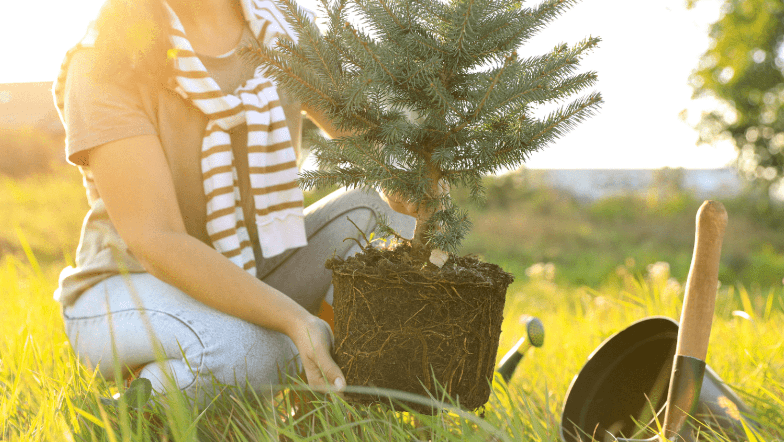
Step-by-Step Planting Guide
Planting conifers can be a rewarding experience, but it’s important to do it right. By following a step-by-step planting guide, you can ensure that your conifers have the best chance of thriving in your garden. First, choose the best time to plant your conifers – spring or fall are ideal, as the weather is mild and the trees have a chance to establish their roots before extreme conditions set in. Next, consider the location – make sure the soil is well-drained, rich in organic matter, and has a slightly acidic pH level. Also, ensure that the spot gets ample sunlight for the conifers to thrive. Consider the space requirements of the conifers you choose, as some species may grow to be quite large and require ample space to thrive. By carefully selecting the right time and place to plant your conifer trees, you can create an optimal growing environment that will ensure the long-term success and beauty of your garden. So, take the time to carefully assess the soil and site conditions in your garden to ensure that you select the right conifers for your space. Your efforts will be rewarded with a beautiful and thriving garden that will bring you joy and satisfaction for years to come.
Common Planting Mistakes to Avoid
When it comes to planting conifers, there are a few common mistakes that can be easily avoided. First, it’s important to choose the best time to plant your conifers. Spring or fall are ideal, as the weather is mild and the trees have a chance to establish their roots before extreme conditions set in. Next, consider the location – make sure the soil is well-drained, rich in organic matter, and has a slightly acidic pH level. Also, ensure that the spot gets ample sunlight for the conifers to thrive. Consider the space requirements of the conifers you choose, as some species may grow to be quite large and require ample space to thrive. By carefully selecting the right time and place to plant your conifer trees, you can create an optimal growing environment that will ensure the long-term success and beauty of your garden. So, take the time to carefully assess the soil and site conditions in your garden to ensure that you select the right conifers for your space. Your efforts will be rewarded with a beautiful and thriving garden that will bring you joy and satisfaction for years to come.
Caring for Conifer Trees
Watering and Mulching
Are essential for the health and growth of your conifer trees. Proper watering is crucial, especially during the first few years after planting. Make sure to water your conifers deeply and thoroughly, allowing the water to penetrate the soil and reach the roots. This will encourage the roots to grow deeper and establish a strong foundation for the tree.
Mulching is also important for conifer trees as it helps retain moisture in the soil, regulates soil temperature, and suppresses weed growth. Apply a layer of organic mulch around the base of the tree, making sure to keep it a few inches away from the trunk to prevent rot.
By providing the right amount of water and mulch, you can ensure that your conifer trees receive the necessary nutrients and moisture to thrive and remain healthy. So, take the time to care for your conifers and watch them grow into beautiful, lush additions to your garden. Your efforts will surely be rewarded with a stunning and vibrant landscape that you can enjoy for years to come.
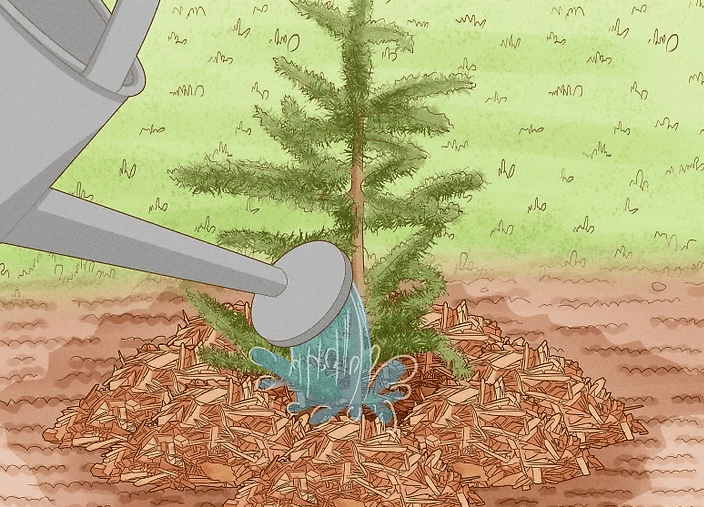
Fertilization and Soil Health
Are crucial for the health and growth of your plants and trees. It’s important to ensure that your soil is rich in nutrients and has a balanced pH level to support the growth of your conifer trees. By regularly fertilizing your soil, you can provide the essential nutrients needed for healthy root development and overall tree health. Choose a high-quality, slow-release fertilizer that is specifically formulated for conifer trees and follow the application instructions carefully. Additionally, consider conducting a soil test to determine the pH level of your soil and make any necessary adjustments to create the ideal growing environment for your conifers. By prioritizing fertilization and soil health, you can ensure that your conifer trees have the best possible foundation for growth and will continue to thrive for years to come. Don’t overlook the importance of proper fertilization and soil health in maintaining the beauty and vitality of your conifers. Your efforts will be well worth it when you see your trees flourish and thrive in a healthy and vibrant environment.
Pruning and Shaping
Are essential for maintaining the health and beauty of your conifer trees. Regular pruning helps to remove dead or diseased branches, improve air circulation, and shape the tree for aesthetic purposes. It’s important to prune your conifers at the right time of year, typically in late winter or early spring, to avoid damaging the tree. When pruning, make clean cuts just above a bud or branch to promote healthy regrowth. Shaping your conifer trees can help to maintain a tidy and attractive appearance, as well as encourage balanced growth. Use sharp, clean pruning tools and make deliberate cuts to create the desired shape for your trees. Take the time to properly care for and shape your conifer trees, and you’ll be rewarded with healthy, vibrant, and visually appealing trees that enhance the beauty of your landscape. Don’t neglect the importance of pruning and shaping in the care of your conifer trees – your efforts will pay off with trees that are both healthy and aesthetically pleasing.
Common Pests and Diseases of Conifer Trees
Identifying Common Pests
When it comes to maintaining the health and beauty of your conifer trees, regular pruning is essential. Not only does it remove dead or diseased branches, but it also improves air circulation and helps to shape the tree for aesthetic purposes. By pruning at the right time of year, typically in late winter or early spring, you can avoid damaging the tree and promote healthy regrowth. Shaping your conifer trees not only maintains a tidy and attractive appearance, but it also encourages balanced growth. By using sharp, clean pruning tools and making deliberate cuts, you can create the desired shape for your trees. Taking the time to properly care for and shape your conifer trees will result in healthy, vibrant, and visually appealing trees that enhance the beauty of your landscape. Don’t underestimate the importance of pruning and shaping in the care of your conifer trees – your efforts will pay off with trees that are both healthy and aesthetically pleasing. So, make sure to give your conifer trees the attention they deserve and watch them thrive for years to come!
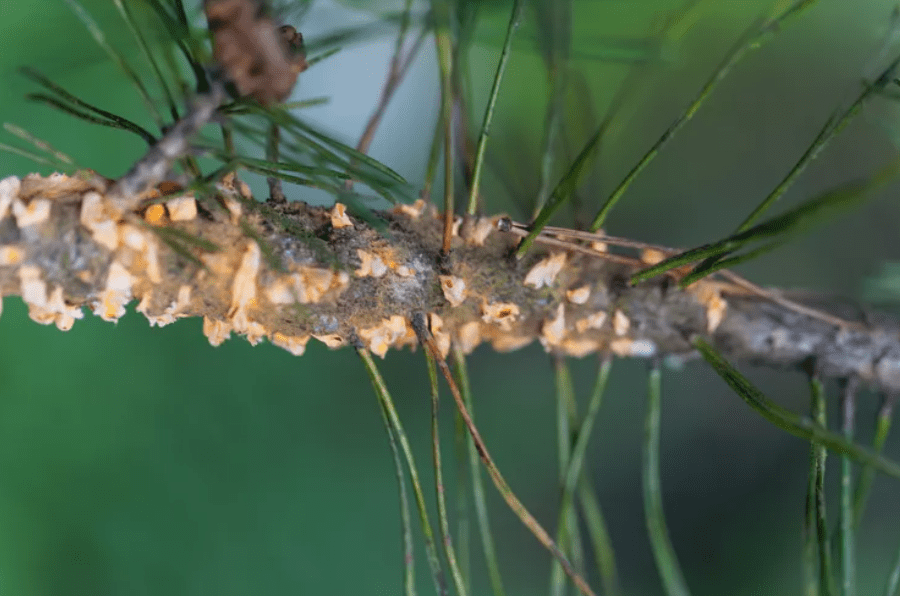
Common Diseases
such as powdery mildew, needle cast, and root rot can cause serious harm to conifer trees if left untreated. By shaping and pruning your trees, you can remove affected areas and prevent the spread of disease. This proactive approach to tree care can save you time and money in the long run by avoiding costly treatments or tree removal. By staying vigilant and addressing potential disease issues early on, you can ensure the health and longevity of your conifer trees. Don’t wait until it’s too late – take the necessary steps to protect your trees from common diseases and keep them thriving for years to come. Your efforts in shaping and pruning will not only improve the aesthetic appeal of your landscape, but also contribute to the overall health and well-being of your conifer trees. With proper care and maintenance, you can enjoy the beauty and benefits of healthy, disease-free trees in your outdoor space.
Integrated Pest Management Strategies
Are essential for keeping your conifer trees healthy and disease-free. By implementing a combination of cultural, biological, and chemical control methods, you can effectively manage pest issues and minimize the need for harmful pesticides. This holistic approach to tree care focuses on preventing pest problems before they occur, rather than relying solely on chemical treatments. By promoting a healthy environment for your trees and encouraging natural predators of pests, you can reduce the risk of infestations and maintain the balance of the ecosystem. Integrated Pest Management also involves monitoring and identifying potential pest threats, so that appropriate action can be taken to address the issue. By staying proactive and using a variety of strategies, you can protect your conifer trees from pests while minimizing the impact on the environment. With the right approach, you can maintain the health and vitality of your trees without compromising the natural ecosystem. Integrated Pest Management is not just about controlling pests, but about creating a sustainable and harmonious environment for your conifer trees to thrive. By implementing these strategies, you can ensure the long-term health and beauty of your trees while preserving the natural balance of your landscape.
Landscaping Ideas with Conifer Trees
Seasonal Landscaping Tips
When it comes to seasonal landscaping, it’s important to keep in mind the specific needs of your conifer trees. In the spring, make sure to fertilize your trees to promote healthy growth and foliage. In the summer, be mindful of watering your trees, especially during hot and dry periods. During the fall, keep an eye out for any signs of disease or pests and take necessary action to address them. And in the winter, protect your trees from harsh weather conditions and consider pruning any dead or diseased branches. By taking these seasonal landscaping tips into consideration, you can ensure the health and beauty of your conifer trees year-round. Let’s work together to create a vibrant and thriving landscape for the future.
In conclusion, growing and caring for conifer trees is a rewarding and fulfilling experience that can bring beauty and tranquility to any landscape. By following the tips and techniques outlined in this guide, you can ensure that your conifer tree thrive and flourish for years to come. Don’t miss out on the opportunity to enhance your outdoor space with these majestic trees. Take the time to learn and implement the best practices for conifer tree care, and you will be rewarded with a stunning and vibrant landscape that will be the envy of your neighborhood.
Frequently asked questions And Answer
Some common types of conifer trees include pine, spruce, cedar, and fir trees.
When planting a conifer tree, make sure to choose a location with well-drained soil and plenty of sunlight. Dig a hole twice as wide as the root ball, place the tree in the hole, and backfill with soil.
Conifer trees should be watered regularly, especially during their first year of growth. Make sure the soil is consistently moist but not waterlogged.
Conifer trees benefit from a slow-release, balanced fertilizer applied in the spring. Be sure to follow the instructions on the fertilizer label.
Pruning conifer trees should be done selectively to maintain their natural shape. Remove any dead or diseased branches, and avoid excessive pruning to prevent stress on the tree.
Conifer trees can be susceptible to pests such as aphids, spider mites, and scale insects, as well as diseases like root rot and needle blight. Regular inspection and proper care can help prevent these issues.
Providing a layer of mulch around the base of the tree can help insulate the roots and protect them from freezing temperatures. Additionally, watering the tree thoroughly before the ground freezes can help prevent winter damage.
Conifer trees provide year-round greenery, act as windbreaks, and offer habitat for wildlife. They also contribute to the overall aesthetic and biodiversity of a landscape.
